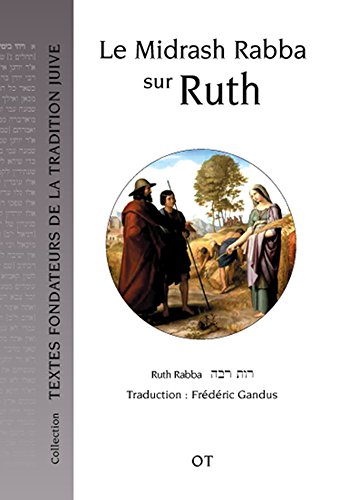 I know, I’ve addressed this question before, but I’ve just come across evidence from a new source so here we go again. It’s a rabbinic source but don’t be too quick to judge that it is late and therefore useless. Can anyone seriously imagine Jewish rabbis borrowing the following interpretations from Christians?
I know, I’ve addressed this question before, but I’ve just come across evidence from a new source so here we go again. It’s a rabbinic source but don’t be too quick to judge that it is late and therefore useless. Can anyone seriously imagine Jewish rabbis borrowing the following interpretations from Christians?
We read a discussion among rabbis of the following rabbinical midrash on the Book of Ruth:
“And Boaz said unto her at meal-time: ‘Come hither, and eat of the bread, and dip your morsel in the vinegar.’ And she sat beside the reapers; and they reached her parched corn, and she did eat and was satisfied, and left thereof (Ruth 2:14)”.
Several interpretations are offered and then we come to the fifth:
The fifth explanation for “come here” is the King Messiah. “Come here”: that is draw near to kingship. “And eat from the bread”: that is the bread of kingship. “And dip your morsel in the vinegar“: this is his chastisements, as it is said: “But he was wounded because of our transgressions (Isaiah 53:5)“.
- It’s about the Messiah. (Elsewhere it is clear that it is the Messiah from David that is spoken about. After all, the Book of Ruth concludes with a genealogy showing how David descended from Ruth.)
- The Suffering Servant passage in Isaiah 53 is applied to the Davidic Messiah.
- The dash of vinegar also looks interesting given what was put in Jesus’ mouth when he was on the cross.
Did the Rabbis learn and embrace that interpretation from their Christian neighbours?
As we read further on we find it even more difficult to accept a Christian influence here. The rabbinic interpreters discuss how long the kingship will be removed from the Messiah and no-one hits on a three-day eclipse:
“And she sat beside the reapers”: that is the kingship was taken from him for a time, as it is said “I have gathered all the nations against Jerusalem to wage war and the city will be taken (Zechariah 14:2)”.
“And they reached her parched corn”: that is his kingship was renewed, as it is said “and he shall smite the land with the rod of his mouth (Isaiah 11:4)”.
Rabbi Berechya said in the name of Rabbi Levi: “like the first redeemer so is the second redeemer. How did the first redeemer reveal himself and then returned and was hidden from them? How long was he hidden? . . . .
One rabbi calculates from Daniel 12:11-12 that the Davidic Messiah will be removed from his kingdom for 45 days. Another suggested a full three months (from a meeting of Moses and Aaron with the elders of Israel), another six months (from the time David fled Absalom). Another rabbi even suggested it spoke of Solomon who left his throne for a while to mingle unrecognized with the hoi polloi and that one woman even beat him for being a pretentious upstart when he tried to explain he indeed was Solomon.
We cannot prove that any of the ideas expressed in the Ruth Rabbah originated before the destruction of the Temple. It is difficult, though, to imagine such ideas taking hold among rabbis in a context of tortured relationships with Christianity. Further, it is not difficult to imagine the motifs we find in the gospels arising from an environment in which Biblical passages were explored in the sorts of ways we see here.
.
(Thanks to Nanine Charbonnel and Maurice Mergui for prompting me to revisit rabbinic literature and see how it deals with Messianic ideas.)
“Ruth Rabbah.” Accessed April 21, 2020. https://www.sefaria.org/Ruth_Rabbah. See especially chapter 5.
